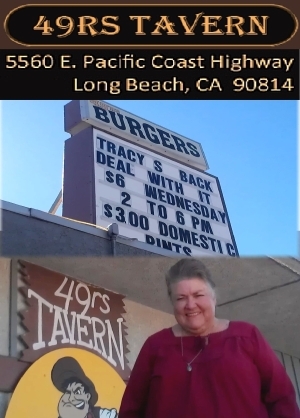(Oct. 9, 2012) -- Moody's Investors Service announced on Tuesday (Oct. 9) that it has "placed under review the lease-backed obligation and/or general obligation ratings" of 32 California cities -- including Long Beach.
Although Long Beach's bond debt is under review for downgrade, the general obligation bond ratings of Los Angeles (Aa3) and San Francisco (Aa2) are on review for upgrade.
A release on Moody's website states the following regarding Long Beach:
TODAY'S [Oct 9] RATING ACTIONS FOR CALIFORNIA CITIES:
LONG BEACH
Issuer Rating
Aa2 Rating under review for downgrade
Lease Revenue Bonds, 2006 Series B
$24.3 million
A1 Rating under review for downgrade
Lease Revenue Refunding Bonds, 2006 Series A (Rainbow Harbor Refinancing Project)
$50.8 million
A1 Rating under review for downgrade
Lease Revenue Refunding Bonds Series 2003A (Non-AMT) & Series 2003B (AMT)
$120.2 million
A1 Rating under review for downgrade
Lease Revenue and Refunding Bonds (Temple & Willow Facility) 1998 Series B
$29.6 million
A1 Rating under review for downgrade
A downgrade could have both fiscal and political impacts. Long Beach Mayor Bob Foster is raising money for a 2014 run for State Treasurer. In his Jan. 2012 "State of the City" message, Mayor Foster made a point of saying that Long Beach "had maintained our AA- credit rating."
Councilman Gary DeLong, who chairs the Long Beach City Council's Budget Oversight Committee, is seeking a seat in Congress, although a downgrade (if any) would likely occur after the Nov. 6 election.
While citing pension changes that the Mayor and management say will save money, city management has continued to publicly forecast budget deficits (City Hall spending exceeding revenue) unless further cuts are made in the next two budget years. Some Councilmembers, most notably Councilwoman Gerrie Schipske, have questioned this practice after noticing that when the City's oil revenue is included -- which Mayor Foster has portrayed as a "one time" revenue source -- it offsets much of the management-projected deficit.
A credit rating downgrade, if it occurred, would make it more costly for Long Beach City Hall to borrow money to finance various items, including infrastructure projects.
In a statement on its website, Moody's says in pertinent part:
The reviews and downgrades reflect a combination of fundamental economic pressures in the state, the different way in which various revenue sources have been affected and the factors that influence a city's ability and willingness to pay the obligations backed by these revenue sources. Most affect securities that are paid from a city's general funds and do not benefit from a specific pledged revenue source.
Moody's identified these securities as part of an overall review begun in mid-August of the credit standing of 95 rated cities in California...
RATING RATIONALE
Today's downgrades and reviews are based on the trends noted in Moody's August 17, 2012 Special Comment "Why Some California Cities are Choosing Bankruptcy." These include the effects of the recent economic and property market downturns, limitations on the cities' ability to raise property taxes, rising fixed costs, and state laws and local precedents that make bankruptcy filings a potentially viable means to address these pressures.
"California cities operate under more rigid revenue raising constraints than cities in many other parts of the country," says Senior Vice President Eric Hoffmann, who heads Moody's California local government ratings team. "Combined with steeply rising costs, these constraints mean that these cities will likely recover more slowly than their peers nationally, even if the state's economic recovery tracks the nation's."
A few recent high-profile bankruptcy filings by cities in the state demonstrate that the willingness of some cities to continue to cut costs and associated municipal services to pay debt obligations may be eroding. For the most part, this affects the debt obligations that are paid out of a city's general fund, such as pension obligation bonds and leased-backed obligations, and that must compete with other priorities for payment.
"Many cities' assessed valuations for the property taxes that support their general obligation bonds have declined only modestly in recent years, but their general funds have come under significantly more pressure," Moody's Hoffmann says. "Since the adoption of Proposition 13 in the late 1970's, the cities' inability to access their local property tax bases for increased operating funds led to diversification into even more economically- sensitive revenue sources, such as sales, business and hotel taxes.
These trends have prompted the review for downgrade of 27 cities' lease-backed obligations paid from cities' general funds. The pension obligation bonds (POBs)of nine issuers, also primarily paid from cities' general funds, were downgraded, and eight of these, along with one other city's POBs, remain under review for possible further downgrade. In the event of a default or bankruptcy, lease-backed debt, especially for an essential asset, could be more likely to be paid than pension obligations.
Moody's also placed under review for downgrade the general obligation ratings of nine cities, eight of which are rated in the Aaa to Aa range.
"Although the risks of a general obligation bond default are lower than the risks of a general fund default, they still exist for cities pressured by stagnant revenues and rising fixed costs, and with relatively easy access to bankruptcy protection in California," Moody's Hoffmann says. "These risks may be inconsistent with these cities' current high ratings."
In contrast, Moody's placed the general obligation bond ratings of Los Angeles and San Francisco under review for upgrade as a reflection of significant tax bases that have demonstrated relative resiliency during the economic and property market downturns.
WHAT COULD MOVE THE RATINGS UP OR DOWN
Negative factors that could drive downgrades of California cities include economic weakening, revenues failing to keep pace with expenditure growth, and declines in fund balance. Weakness in general fund finances could also result in a widening of the notching between ratings on a city's POBs and lease-backed obligations and its general obligation rating. Positive factors that could move ratings up include robust tax base growth, a balance between revenue and expenditure growth, and growth in fund balances.
For more information, see today's report "Key Drivers of California Cities' Rating Actions and Reviews" and Moody's August 17 report "Why Some California Cities are Choosing Bankruptcy."
The principal methodologies used in these ratings was General Obligation Bonds Issued by U.S. Local Governments published in October 2009 and The Fundamentals of Credit Analysis for Lease-Backed Municipal Obligations published in October 2004. Please see the Credit Policy page on www.moodys.com for a copy of these methodologies.
Other nearby cities affected:
DOWNEY
Taxable Pension Obligation Bonds, 2005 Series A
$20.6 million
A2 Rating under review for downgrade (Downgraded from A1/No Outlook)
HUNTINGTON BEACH
Judgment Obligation Bonds, Series 2004
$12.5 million
Aa3 Rating under review for downgrade (Downgraded from Aa2/No Outlook)
SANTA ANA
Certificates of Participation City Hall Expansion Project
$12.5 million
Baa1 Rating under review for downgrade
SANTA MONICA
General Obligation Bonds
$36.33 million
Aaa Rating under review for downgrade
Lease Revenue Bonds, Series 2002 (Public Safety Facility)
$17.3 million
Aa1 Rating under review for downgrade
Lease Revenue Bonds, Series 2004
$38.9 million
Aa1 Rating under review for downgrade
Lease Revenue Bonds, Series 2009 (Public Safety Facility Project)
$9.2 million
Aa1 Rating under review for downgrade
Lease Revenue Bonds, Series 2011A
$32.4 million
Aa1 Rating under review for downgrade
Lease Revenue Bonds, Series 2011B
$8.8 million
Aa1 Rating under review for downgrade
Lease Revenue Refunding Bonds, Series 2002
$10.5 million
Aa1 Rating under review for downgrade
TORRANCE
Issuer Rating
Aa1 Rating under review for downgrade
Certificates of Participation, Series 2009
$18.9 million
Aa3 Rating under review for downgrade
Certificates of Participation, (Refinancing and Public Improvement Project) Series 2004B
$23.9 million
Aa3 Rating under review for downgrade
Certificates of Participation Refunding, Torrance Public Financing Authority (Police and Fire Station), Series 1998
$10.3 million
Aa3 Rating under review for downgrade
A full list of ratings affected can be viewed here.
CA has 482 cities; Moody's rates the debt of 95 of them.
Developing.
















